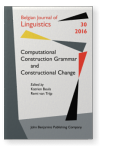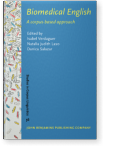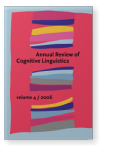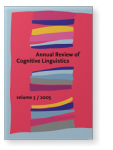Joseph Hilferty
List of John Benjamins publications for which Joseph Hilferty plays a role.
2016 Embodied cognitive semantics for quantification Computational Construction Grammar and Constructional Change, Beuls, Katrien and Remi van Trijp (eds.), pp. 251–264 | Article
The present paper proposes an operational semantic model of natural language quantifiers (e.g., many, some, three) and their use in quantified noun phrases. To this end we use embodied artificial agents that communicate in and interact with the physical world. We argue that existing paradigms… read more
2016 Why are embodied experiments relevant to cognitive linguistics? Computational Construction Grammar and Constructional Change, Beuls, Katrien and Remi van Trijp (eds.), pp. 265–286 | Article
Computational simulation models of cognitive linguistics are relatively scarce (cf Valenzuela, 2010). This is due, among other things, to the inherent complexity of the movement’s conception of language. Cognitive linguistics places great emphasis on the integration of language with sensorimotor… read more
2013 The metaphorical basis of discourse structure Biomedical English: A corpus-based approach, Verdaguer, Isabel, Natalia Judith Laso and Danica Salazar (eds.), pp. 165–184 | Article
The present chapter provides an alternative approach to discourse analysis based on the Cognitive Theory of Metaphor (Lakoff & Johnson 1980, 1999; Johnson 1987; Lakoff 1993, inter alia). Unlike other studies on text structure, this paper argues that our metaphorical conceptualization of discourse… read more
2013 Formal and functional variation of lexical bundles in biomedical English Biomedical English: A corpus-based approach, Verdaguer, Isabel, Natalia Judith Laso and Danica Salazar (eds.), pp. 39–54 | Article
This study is an investigation of the morphosyntactic, lexical and functional variation of lexical bundles in scientific writing. In this chapter, we discuss the various methodological issues involved in the analysis of the structural variability and multifunctionality of lexical bundles, and the… read more
2013 SciE-Lex: A lexical database Biomedical English: A corpus-based approach, Verdaguer, Isabel, Natalia Judith Laso and Danica Salazar (eds.), pp. 21–38 | Article
This chapter deals with the main methodological issues underlying the building of the SciE-Lex lexical database and discusses and justifies the information included. SciE-Lex was initially conceived as a response to the lack of reference tools that can help scientists write scientific papers in… read more
2012 Interview with Antonio Barcelona Review of Cognitive Linguistics 10:1, pp. 215–226 | Article
2012 The emergence of quantifiers Experiments in Cultural Language Evolution, Steels, Luc (ed.), pp. 277–304 | Article
Human natural languages use quantifiers as ways to designate the number of objects
of a set. They include numerals, such as ``three'', or circumscriptions, such as ``a few''.
The latter are not only underdetermined but also context dependent.
We provide a cultural-evolution explanation for the… read more
2012 Acquiring verbs in Spanish: An evaluation of two proposals Review of Cognitive Linguistics 10:1, pp. 133–155 | Article
The objective of the present study focuses on exploring two proposals about the acquisition of the grammatical category of verb. On the one hand, the study aims at analyzing whether the acquisition of a given mass of verbal lexical items occurs before the emergence of productive verbal morphology.… read more
2006 Review of Vallès (2004): La creativitat lèxica en un model basat en l’ús (Una aproximació cognitiva a la neologia i la productivitat) Annual Review of Cognitive Linguistics: Volume 4, Ruiz de Mendoza Ibáñez, Francisco José (ed.), pp. 285–287 | Review
2005 On the reality of constructions: The Spanish reduplicative-topic construction Annual Review of Cognitive Linguistics: Volume 3, Ruiz de Mendoza Ibáñez, Francisco José (ed.), pp. 201–215 | Article
In the present paper, we adduce further evidence for the reality of grammatical constructions by focusing on a highly idiosyncratic configuration from Spanish, which we call the reduplicative-topic construction. This construction is a productive syntactic pattern that functions as a “constructional… read more





